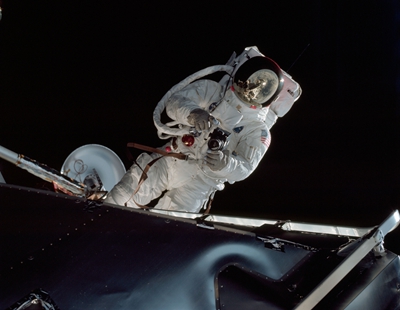

This week in 1969, the Apollo 9 crew splashed down after a 10-day mission. Here, astronaut Russell L. Schweickart performs a spacewalk on the fourth day of the Earth-orbital mission. The Apollo 9 spacecraft, in the lunar mission configuration, was tested in Earth orbit. The mission was designed to rehearse all the steps and reproduce all the events of the Apollo 11 mission with the exception of the lunar touchdown, stay and liftoff. The Command and Service Module, and the Lunar Module were used in flight procedures identical to those that would later take similar vehicles to the moon. NASA's Marshall Space Flight Center designed, developed and managed the production of the Saturn V rocket that took astronauts to the moon. Today, Marshall is developing NASA's Space Launch System, the most powerful rocket ever built that will be capable of sending astronauts deeper into space than ever before, including to an asteroid and Mars.
The NASA History Program is responsible for generating, disseminating, and preserving NASA’s remarkable history and providing a comprehensive understanding of the institutional, cultural, social, political, economic, technological, and scientific aspects of NASA’s activities in aeronautics and space. For more pictures like this, and to connect to NASA’s history, visit the History Program’s webpage. (NASA)
See: https://www.nasa.gov/centers/marshall/history/this-week-in-nasa-history-apollo-9-returns-to-earth-march-13-1969.html
